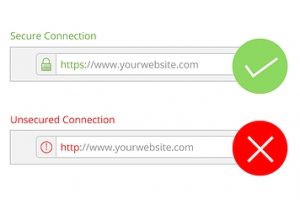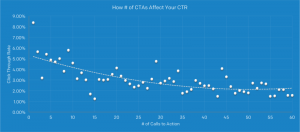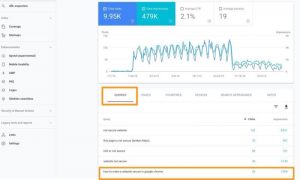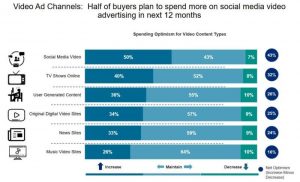Brands can now design emails to more easily create a uniform brand experience across platforms and devices.
It should come as no surprise by now that if you’re designing emails with a mobile-first ethos and aesthetic, then you’re already late to the game. Nearly 56% of emails are now opened via a mobile device, which means we’ve been living in a mobile-first world for quite some time. The overhead associated with managing templates across devices, domains and brands could be onerous but thanks to responsive email design techniques, brands have numerous options for controlling the look and feel of their emails and minimizing the associated work to create a uniform brand experience across platforms and devices. This may all seem like old hat, but it’s worth reviewing how mobile has changed email and how it will continue to define our inbox experience moving forward.
Keep it small
Remember this number: 102. If your email is more than 102KB in size, then Gmail will clip your message when it arrives and asks the recipient to “download” the rest of it. Why are long emails a problem? Most people put their tracking pixel at the bottom of a message. If the whole message isn’t rendered, then you won’t register an open. Recipients are fickle and may deem a message that isn’t fully rendered from top to bottom as broken and simply delete or mark the email as spam. Mobile is all about portability and speed – messages that lack these two qualities (e.g., requiring the recipient to take an extra step) will be seen as flawed. Thus, keep your messages light and to the point.
One column to rule them all
Single column layouts are often the best and most expedient means of organizing your content and calls to action (CTA) for mobile devices. More than a single column will require recipients to pinch, squeeze and manipulate the email. When you consider how mobile content is consumed – on the go, commuting on a train or a bus, walking to lunch, etc. – making email easily scrollable with nothing more than a thumb swipe is the way to go and makes for longer potential engagement. Embrace one-handed navigation and the simplicity of single columns. If you do decide to use a two column layout, check out this example from Hautelook that uses oversized images in a staggered orientation. The key is that the images and CTAs are large throughout the message, making the two columns a playful back and forth between image and text.
Taps not clicks
This may be stating the obvious, but I don’t see a lot of mobile devices coming equipped with a mouse. Thankfully, we’ve come far since the first Handsprings and Palm Pilots that required a stylus for interacting with the screen. Today, Apple’s human design interface guidelines state 44 square pixels is the target while Android’s guidelines point to 48 as the magic number. The truth is somewhere in between. Whatever size you choose to make your buttons and CTAs, make sure they’re well padded and spaced so that mishaps don’t happen. Jamming a bunch of options next to each other without a little breathing room is certain to wind up causing recipient frustration when opening or tapping the wrong link.
Sometimes mobile is the only screen
The developing world often relies on mobile devices as the only connective tissue between recipients and the world wide web. In the developed world, we talk about second screen viewing, synching across devices, experiences and portability between devices, form factors, etc. In the developing world, the small screen is the primary means of accessing the internet. iOS devices tend to be too expensive for the developing world, so recipients are armed with a wide array of Android-enabled devices of varying quality and size.
If your business exists beyond the borders of the developed world, then researching and testing your content on these cheaper devices is critical to ensure your recipients are experiencing your brand and communications as you intended. The quality of rendering, connection and a screen, along with the ability to download larger emails, will all fluctuate depending on where and how your emails are received. Keeping your emails to 102KB should be strictly enforced for a tighter and smaller overall message size to take into account bandwidth and screens that may not be ideal for reading email.
Time and devices
This piece of advice is always worth repeating: make sure your emails follow the sun. Sending all of your emails to all of your recipients at 8 a.m. PST or EST means your international audience will either be woken up by a buzzing phone (a big faux pas in China) or the email will be at the bottom of their inbox when they finally awake and check their email. Segment and deploy your emails based on where your recipients are. Mobile is the primary means for sending and receiving emails in China, so it’s important for senders to be aware of things like Chinese time – even though it spans five time zones, the entire country functions on a single time zone pegged to Beijing. Therefore, senders need to consider these time zones.
Uniform experiences
Mobile email is the jumping-off point for a wide array of experiences. Pressing a button in an email can open a mobile website or an app. Whatever the intended outcome, make sure that the experience is uniform across your mobile properties. The expectation is that if I follow a link from an email on my mobile device, the ensuing content and presentation will be properly branded from start to finish.
Announce yourself
Mobile email list views in Apple Mail or other email clients make subject lines more or less equal in size and readability. Using no-reply or other email addresses that discourage recipients from replying to unsubscribe, or other forms of engagement, means that the list view seems hostile and unwelcoming. Choosing a friendly from that adequately conveys your brand and acts as an identifying, trustworthy marker in the inbox, promotes the kind of trust and authenticity that breeds greater engagement and improved inbox placement. Ultimately, you want to let the recipient know who is sending the message and, from the standpoint of a subject line, why they’re receiving this message.
The future is interactive
Google recently announced the general availability of AMP for email, and the internet is awash with excitement for the next step in email’s storied evolutionary history. AMP promises to create new unique experiences in the inbox, and other mailbox providers have announced future support for the technology. Currently, Gmail is the only place where recipients receiving AMP messages will have these new interactive experiences. The ability to create micro apps in the inbox means that email will have a much longer shelf life, not to mention a new focus for brands in the coming years. But this is yet another example of email becoming more optimized to match user expectations. The future is more than just mobile; it’s excitingly interactive.
Opinions expressed in this article are those of the guest author and not necessarily Marketing Land. Staff authors are listed here.
Marketing Land – Internet Marketing News, Strategies & Tips
(40)










